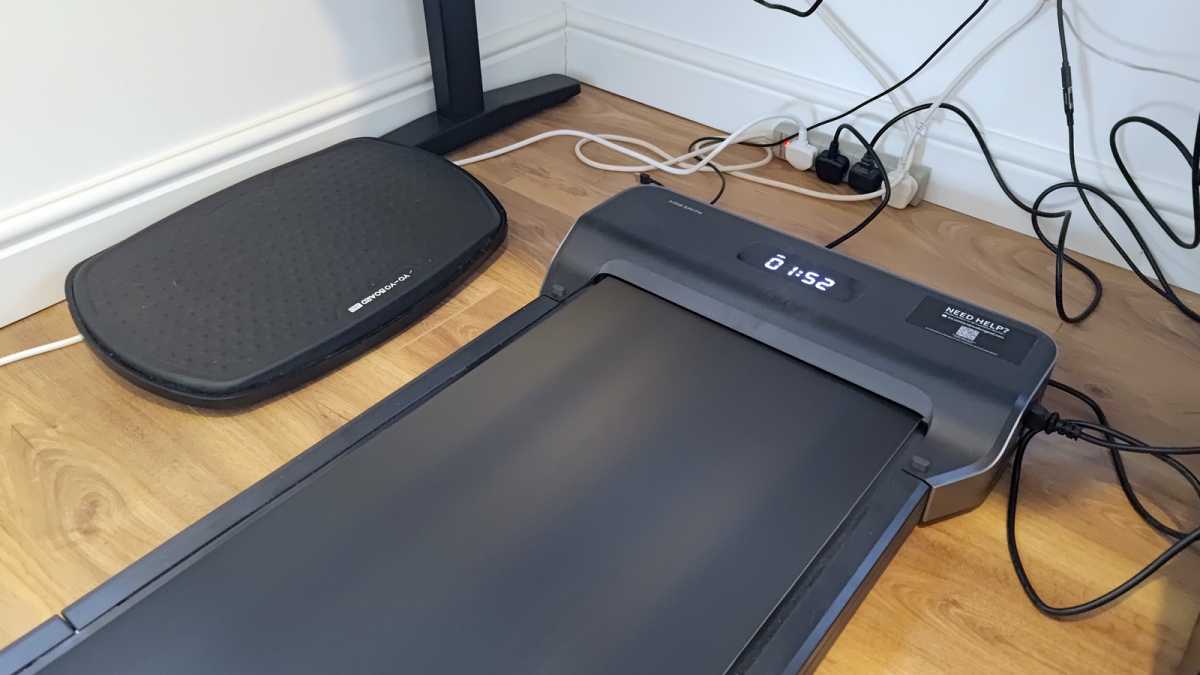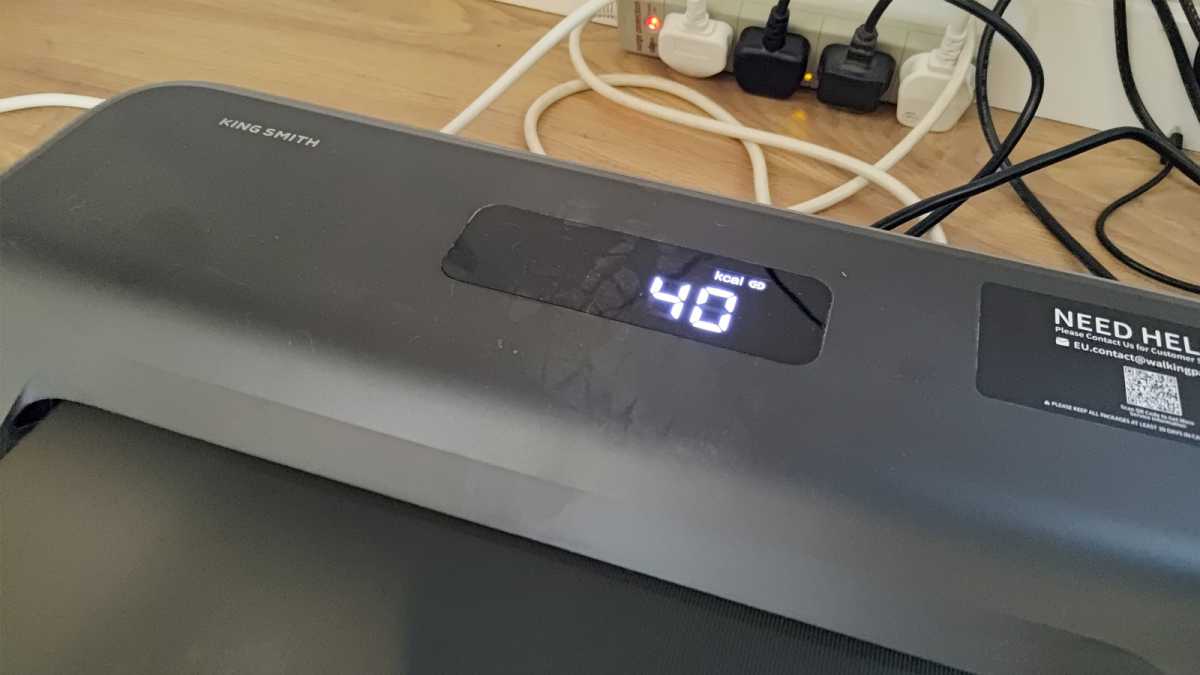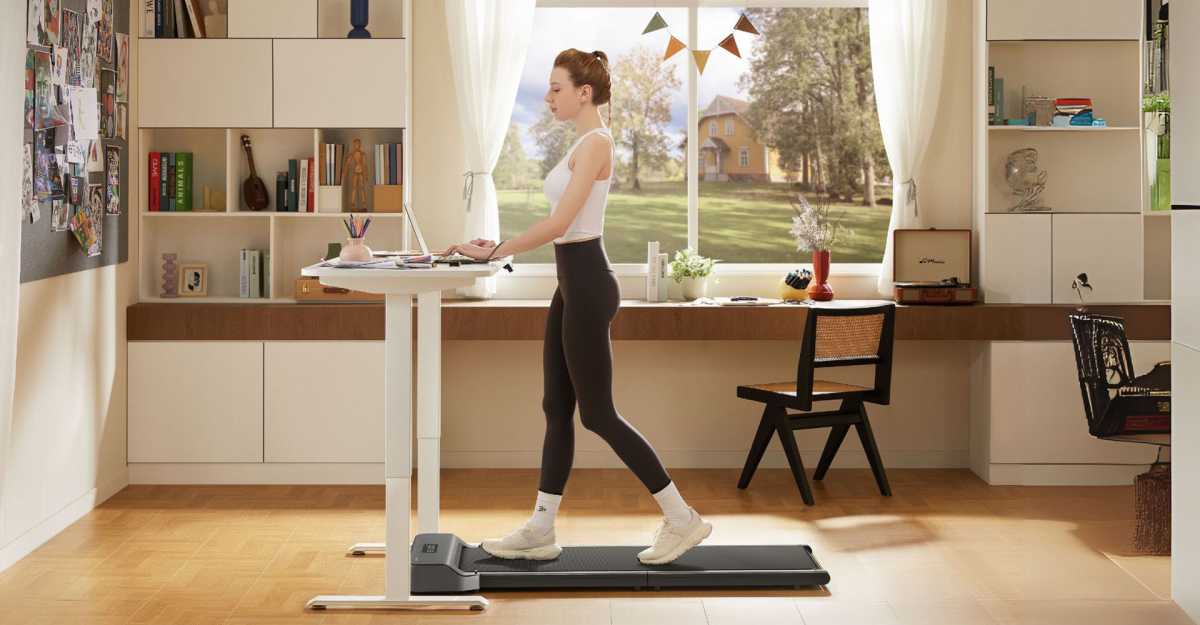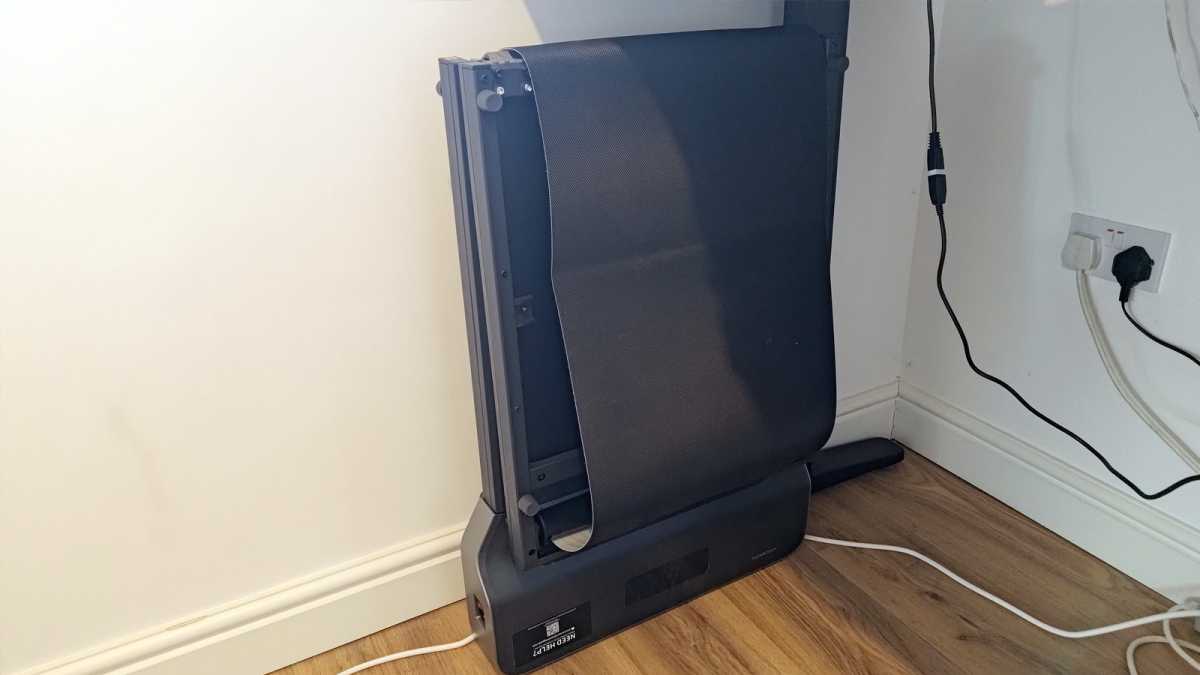One of the things I love most about using a standing desk is how much it lets me move around. I can tap my feet, dance around, stretch, play balance games on my wobble board, dip aside for some exercise, or even stand on one leg like a flamingo. But there’s one thing I’ve always wanted to try: an under-desk treadmill. I loved the idea of getting in a few miles while typing away. Surely it’d be great for my health!
So when I had the opportunity to test a WalkingPad Z1 folding treadmill for standing desks, I leaped at the chance! And I’m really glad I did because now I know what it’s like to walk for hours every day while working. It isn’t easy. I’m tired, I’ve fallen off a few times, and I find it annoying at times. I’ve certainly learned a lot from the experience.
After a month of on-again-off-again treadmill-walking while I work, I have some thoughts. Here’s what the past month has taught me and whether I’ve decided to keep it or move on to something else.
Walking is way harder than standing
This might sound obvious—and perhaps I missed the forest for the proverbial standing-desk trees here—but I was surprised how tiring it was to walk than to stand. I like to think I’m pretty active at my standing desk, but using a rocker board or bouncing from foot to foot is not the same as straight-up walking. Not by a long shot.
On my first day with the under-desk treadmill, I went about 40 minutes at just over a mile per hour—what I thought would be a sedate pace. It didn’t make me exhausted like I’d just worked out, but notably tired and side-eyeing my expensive office chair for a bit of rest.

Jon Martindale / Foundry
I was hot, too. Not sweaty, but walking is technically exercise and this proved it. Keep that in mind if your usual home office attire is tight, or if you don’t like wearing footwear. You’ll want something breathable and something to keep your feet comfortable and protected.
I also found it surprisingly tough to type while walking, at least when I first started. My typing accuracy went down and my typing speed fell enough to impact productivity on those first few days. It was frustrating, but a frustration worth pushing through because it only took a handful of sessions on the treadmill for it to become easier. (I previously used a rocker board at my desk so that could’ve helped me get acclimated. Your learning curve may vary depending on how active you are.)
An under-desk treadmill is noisier than I expected, too. You have to consider the motor, the sound of actually walking on it, and the way it tonally shifts with each step. I had to wear headphones on the first few days just to block it out and maintain my focus.
But you forget about it sooner or later
About a week into my under-desk treadmill journey, something clicked. I was playing an online board game with some friends (our weekly Twilight Imperium session on Tabletop Simulator) and feeling a bit fatigued towards the end of a particularly grueling turn. That’s when I realized: I’d been walking on the treadmill for over an hour and a half.
Of course, I hadn’t just fallen onto it by accident—I clearly set it up and meant to get some steps in while gaming—but what surprised me is just how quickly the time flew by. I was 324 calories down and several miles into a walking excursion I didn’t even realize I was taking.

Jon Martindale / Foundry
This a-ha moment is when I finally saw the true strength of this standing desk accessory. Once it becomes part of your daily routine, it’s an incredible way to burn significant calories, get your steps in, and improve circulation in your legs, all without even realizing it.
It’s pretty much pain-free exercising. Well, almost…
Falling off is a real hazard
There aren’t a lot of differences between a standard gym treadmill and an under-desk treadmill, but there are a few.
The most important difference is that treadmills meant for standing desks are slower. They’re designed for walking, not running. It doesn’t matter how well-balanced you are—there’s no way you can productively reply to emails and Slack messages while hitting a 10-minute mile. Slow down, take a gentle pace, and let the calories burn on their own.

WalkingPad
But because they’re slower, under-desk treadmills ditch the handrails that you normally see on traditional treadmills, and their walking decks are narrower than you might expect. This creates a situation where if you get a little too focused on work, you could accidentally step off to the side, lose your rhythm, and stumble—or even fall. I’ve accidentally stepped off the belt and walked into my desk, or ended up with one foot being dragged while I try to recover from involuntary splits.
It’s only happened a few times, mind you, but often enough that I’ve learned to be more careful. One time I even stepped backwards and broke the safety plastic that prevents anything from being dragged under the belt. I should probably fix that before my dog gets caught in it…
Folding away is a must-have feature
As slim and as low-profile as it is, my WalkingPad Z1 treadmill is still a hefty piece of kit. It measures 4.6 feet long and just under 2 feet wide, which is quite big for something that’s stuck under a desk—or, more often than not, pushed to the side when you aren’t using it. Workdays last much longer than walkdays, I’ve come to realize.

Jon Martindale / Foundry
But unlike many other under-desk treadmills, this model actually folds in half. Once folded, it flips into a much more manageable 2.5 feet long, and it also has nifty wheels that make maneuvering it very easy—and that’s despite its 51-pound overall weight. Getting it out of the way when unused would be a nightmare if it didn’t fold in half.
It ain’t the holy grail, but it’s useful
For many years, I looked to standing desk treadmills as the gold standard of home office tech. It’d burn serious calories, keep me from slumping at my desk, and help encourage blood flow in my lower extremities where varicose veins feel like an ever-present threat.
But now that I’ve used one for a month, I don’t see them that way anymore. Standing desk treadmills are excellent, but you don’t use them all day. You can’t. I know there are ultra marathon runners who manage hundreds of miles over weeks of constant running, which is far harder than walking while working, but they destroy themselves in the process.
I’m not looking to do anything like that. I think walking non-stop for 8+ hours a day wouldn’t be healthy—or sustainable—long-term. And even if I could manage it physically, I’d just get bored.
That said, I’m going to keep using the treadmill. Perhaps for an hour a day, maybe two. But I’m not trying to win any work-from-home championships here. I’m just looking to up my steps, burn a few extra calories, and give me an alternative to sitting and standing so I can improve my back pain and overall posture.
Login to add comment
Other posts in this group

After years of waiting for new Nest smart gear from Google, it appear


By default, Windows only shows scroll bars when they are actually nee

If you always feel achy and uncomfortable after a long day at your de

Having plenty of memory in your PC is more important than ever, now t


If there was ever a good time to upgrade your gaming laptop to one wi
